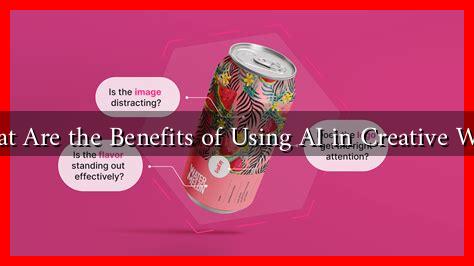-
Table of Contents
What Are the Benefits of Using AI in Creative Work
Artificial Intelligence (AI) has rapidly transformed various industries, and the creative sector is no exception. From graphic design to music composition, AI tools are enhancing the creative process, enabling artists to push boundaries and explore new possibilities. This article delves into the numerous benefits of using AI in creative work, highlighting how it can augment human creativity, streamline workflows, and foster innovation.
Enhancing Creativity and Inspiration
One of the most significant advantages of AI in creative work is its ability to enhance human creativity. AI can analyze vast amounts of data, identify patterns, and generate ideas that may not have been considered by human creators. This collaborative approach can lead to innovative outcomes.
- Idea Generation: AI tools like OpenAI’s GPT-3 can generate text prompts, story ideas, or even entire scripts, providing writers with a fresh perspective.
- Visual Inspiration: Platforms like DeepArt and Runway ML allow artists to create unique visual styles by blending different artistic influences, sparking new ideas.
- Music Composition: AI algorithms can compose music in various genres, offering musicians a new source of inspiration and collaboration.
Streamlining Workflows
AI can significantly improve efficiency in creative workflows, allowing artists to focus more on the creative aspects of their work rather than mundane tasks. By automating repetitive processes, AI frees up time for creators to explore their artistic vision.
- Automated Editing: Tools like Adobe Photoshop’s AI-powered features can automatically enhance images, saving photographers hours of manual editing.
- Content Curation: AI algorithms can analyze user preferences and curate content, making it easier for creators to reach their target audience.
- Project Management: AI-driven project management tools can help teams collaborate more effectively, ensuring that deadlines are met without sacrificing creativity.
Personalization and Audience Engagement
AI enables creators to tailor their work to specific audiences, enhancing engagement and satisfaction. By analyzing user data, AI can help artists understand their audience’s preferences and create content that resonates with them.
- Targeted Marketing: AI can analyze consumer behavior and preferences, allowing creators to develop targeted marketing strategies that increase visibility and sales.
- Interactive Experiences: AI can create personalized experiences in gaming and virtual reality, making the content more engaging for users.
- Feedback Analysis: AI tools can analyze audience feedback and sentiment, helping creators refine their work based on real-time data.
Fostering Innovation and New Art Forms
The integration of AI in creative work has led to the emergence of new art forms and innovative practices. Artists are increasingly experimenting with AI-generated content, leading to a fusion of technology and creativity.
- Generative Art: Artists like Refik Anadol use AI to create stunning visual installations that evolve in real-time, challenging traditional notions of art.
- AI-Driven Storytelling: Interactive narratives powered by AI allow audiences to influence the storyline, creating a unique storytelling experience.
- Collaborative Projects: Initiatives like “The Next Rembrandt” project demonstrate how AI can analyze historical data to create new works in the style of classic artists.
Case Studies and Real-World Applications
Several organizations and individuals have successfully integrated AI into their creative processes, showcasing its potential.
- Amper Music: This AI music composition platform allows users to create original music tracks in minutes, catering to content creators who need quick and customizable soundtracks.
- Artbreeder: This platform enables users to blend images and create new artworks using AI, fostering a community of collaborative creativity.
- Google’s DeepDream: This AI program generates surreal images by enhancing patterns in existing photos, pushing the boundaries of visual art.
Conclusion
The integration of AI in creative work offers numerous benefits, from enhancing creativity and streamlining workflows to fostering innovation and audience engagement. As artists and creators continue to explore the potential of AI, we can expect to see a new era of creativity that blends human intuition with machine intelligence. By embracing these technologies, creators can not only improve their efficiency but also unlock new artistic possibilities that were previously unimaginable. The future of creativity is here, and it is powered by AI.
For more insights on the intersection of AI and creativity, you can explore resources like Forbes.


